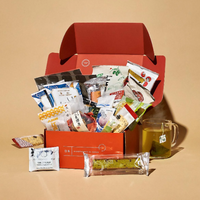Donburi: A Must-Try Japanese Dish
Donburi is a classic part of Japanese cuisine, and you’ll see signs for it all across the country. But it’s often a little confusing to work out what donburi actually means! That’s because the word refers to both a style of meal, and the bowl that said meal is served in.
What is Donburi Exactly?
In the simplest terms, a donburi bowl is a large dish that can be used for many Japanese meals like noodles and soups, but is primarily used as a rice bowl. It’s typically made from ceramic, clay or porcelain, sometimes with a fitted lid to retain heat, and has a wide opening with a smaller base. The general consensus is that donburi bowls should have a radius of over 15 centimeters and a height of 5 centimeters, and be able to accommodate about 900ml – which is a lot of rice! There are mini donburi to match children’s appetites though, and these smaller bowls can also be used for side dishes at restaurants or at home.
When it comes to the meal version of donburi, there’s less specificity. In fact, donburi is a relatively simple dish, and something you can easily make at home for yourself. First up is a generous helping of hot steamed rice, layered into the base of the donburi bowl. Next comes meat and vegetables, usually cooked in a sauce so it soaks nicely into the rice. Then you can top it with various garnishes – sliced scallion, egg omelet, a scattering of sesame seeds and strips of seaweed – along with any sauces you might enjoy.
What is the History of Donburi?
Donburi has been around for several hundred years: in fact, it’s typically regarded as Japan’s original fast food meal. It first began to appear as a dish during the Edo Period in the 1600s, when the first donburi was apparently a bowl of sliced grilled eel over rice (unagi donburi or unadon) served to theatergoers in Tokyo. Before this, it was considered impolite to scoop food up directly from one bowl – but as eating on the go became more common in Japan, so too did the donburi style of dining. Nowadays donburi has escalated to the point where it’s available in countries all over the world as a simple, cheap, quick and delicious meal that will always leave you satisfied.

Types of Donburi
Donburi is a hugely popular dish in Japan, with many restaurants exclusively serving donburi bowls, so it makes sense that there are a number of well-known variants. For non-Japanese speakers keen to try a donburi bowl, it’s easy to recognise donburi on the menu from the addition of the suffix ‘–don’ to the name of any dish.
Oyakodon (‘parent and child’ donburi) is particularly popular with foreigners thanks to its simple ingredients of chicken, beaten eggs, soy sauce and stock, while katsudon, the rice bowl version of tonkatsu, features the globally renowned deep-fried Japanese style pork cutlet with a sweet tasting sauce, topped with egg omelet. Many Japanese people love beef donburi, otherwise known as gyudon, which includes thin strips of beef and onions simmered together in a mildly sweet sauce – and though kaisendon is well known thanks to its thin slices of fresh and seasonal raw seafood, it’s not too popular with tourists!
It may seem like donburi is similar to other well known rice bowl dishes like poke and bibimbap, but there are some significant differences. First is the origin of these dishes – bibimbap is Korean, while poke comes from Hawaii. Poke is also heavily focused on raw fish, while donburi can involve fish, white meat, red meat or seafood. The bibim part of bibimbap also refers to the burned rice at the bottom of the dish, caused by the stone bowl (‘dolsot’) continuing to retain heat throughout the meal – which a donburi bowl doesn’t do.
Can I Make My Own Donburi?
Making donburi at home is really easy, and the best way to make it look and taste delicious is by serving it in your very own donburi bowl. Of course, you’re not obligated to use a donburi bowl solely for this meal though: you can use your beautiful new bowl for ramen, soups, and plenty of other dishes. And because these products are built to last, you can enjoy Japanese-inspired meals for years to come!

Author Bio











